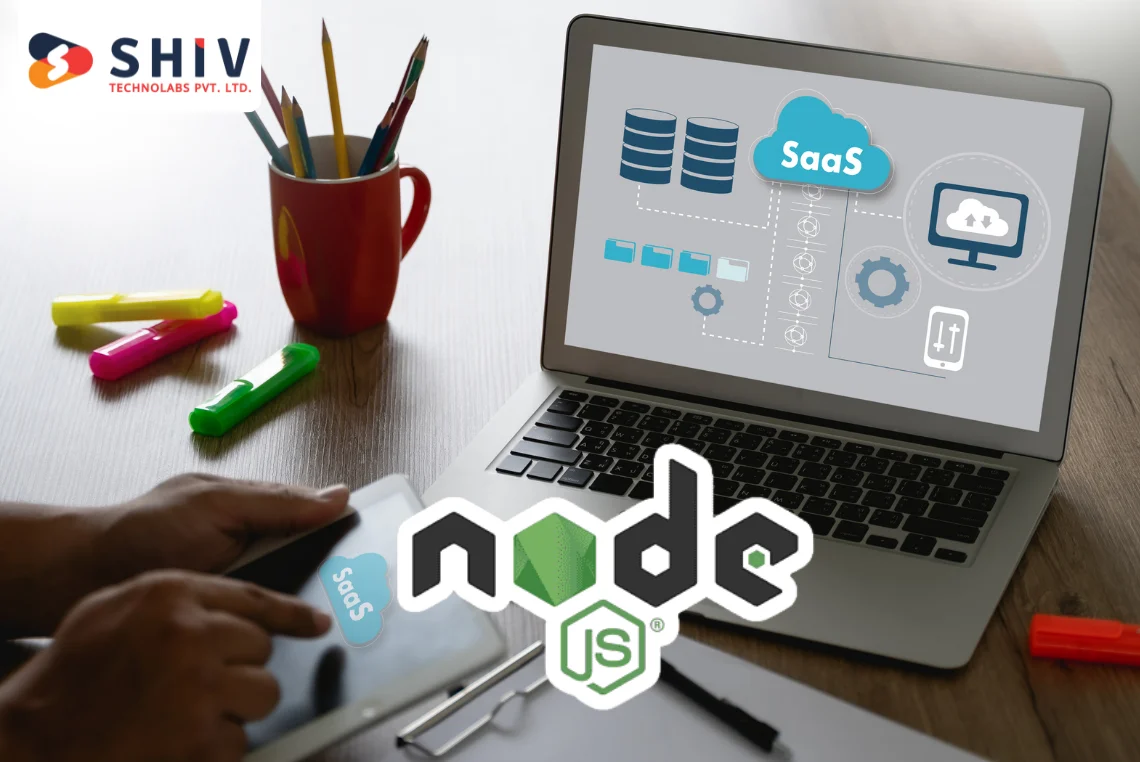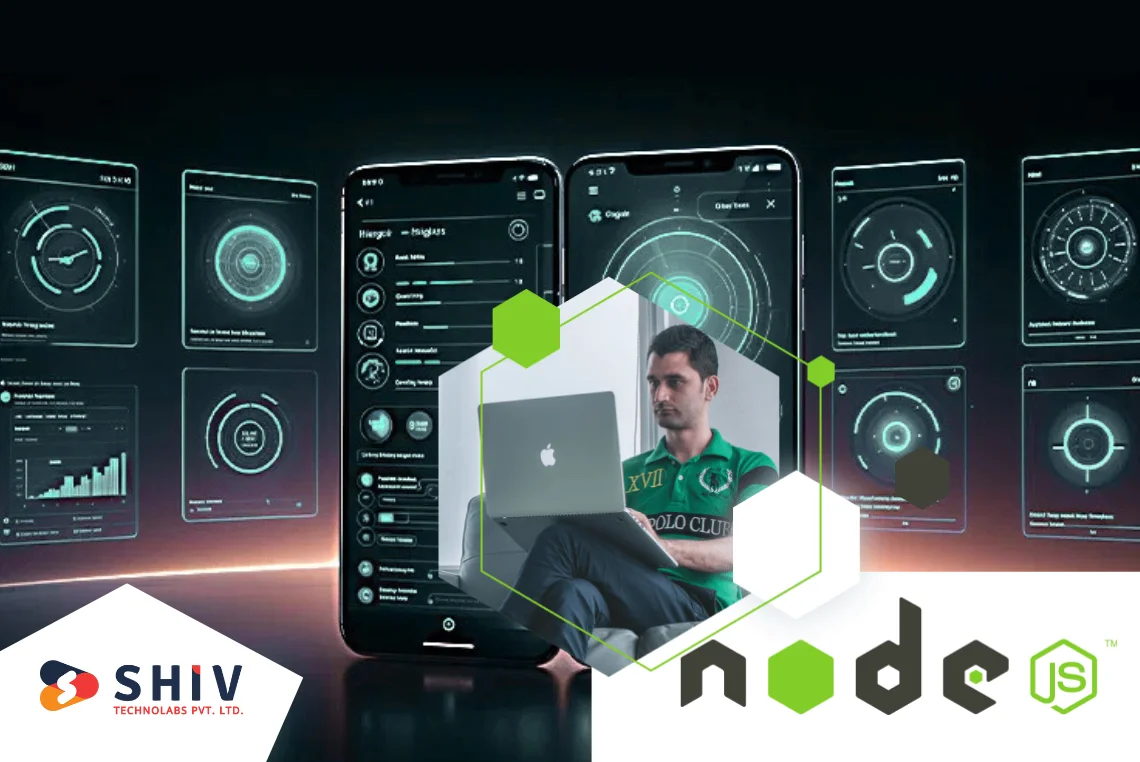Table of Contents
Over the years, web development has changed completely and has been the backbone of modern digital platforms. As we enter 2025, businesses are eager to create appealing, functional, and interactive websites. Front-end frameworks play a significant role in this, as they assist front-end developers in designing friendly user interfaces while saving time and effort.
This article discusses the best front-end frameworks for web development, features, and how businesses can make the right decision to enhance their online presence. The discussion will involve insight into what would be best to choose responsive web design as well as a customized front-end framework solution.
Front-End Frameworks – The Basics
A front-end web development framework is a library of prewritten code and designs. Developers work on websites and applications that enhance user experience and ensure smooth navigation, fast load times, and appealing visuals.
# Benefits of Front-End Frameworks
Front-end frameworks have provided several benefits including:
- Faster Development: Frameworks provide pre-built components such as buttons, forms, and navigation bars. Developers can put them directly in their projects instead of coding similar things repeatedly.
- Consistent Design: By using shared elements and design principles, frameworks help maintain uniformity across pages.
- Responsive Web Design: Many frameworks, such as Bootstrap, are built with responsiveness in mind, allowing websites to perform well across all devices. This makes them the best frameworks for responsive web design.
- Cross-Browser Compatibility: Front-end frameworks address browser inconsistencies, saving developers time and effort during testing.
- Scalability: Frameworks like Angular or React support the growth of applications. Therefore, it is suitable for both startups and enterprises.
# The Role of Front-End Web Development Frameworks
Front-end frameworks simplify the process of building interfaces for websites and applications easier. They offer developers pre-built tools, components, and structures that make coding faster and more consistent. These frameworks have become critical for businesses that want to create scalable, visually appealing, and responsive designs.
Top Front-End Development Frameworks to Use in 2025

As web development continues to evolve, the right front-end frameworks are key to building dynamic, responsive websites. In 2025, these top frameworks will provide powerful tools and features that streamline development, enhance performance, and deliver a seamless user experience. Whether you’re a beginner or an experienced developer, these frameworks are essential to staying ahead in the industry.
1. Angular
Angular is a dynamic web application-building framework developed by Google. It is based on TypeScript, with static typing, which makes the writing and management of large projects easier.
Angular Key Features:
- Two-Way Data Binding: Automatically synchronizes data between model and view.
- Dependency Injection: Facilitates easier management of services and components.
- Component-Based Architecture: Allows reusability and better code management.
- CLI (Command Line Interface): Speeds up development with tools for scaffolding, testing, and deployment.
Ideal For: Large-scale, data-driven web applications such as enterprise dashboards or management systems.
Example: Google uses Angular for Gmail, a powerful email platform with dynamic user interactions and real-time updates.
Also Read: Flutter vs Angular: Which Is Better for Web App Development?
2. Next.js
Next.js is built on React but is optimized for server-side rendering (SSR) and static site generation (SSG). It combines the flexibility of React with improved performance and SEO.
Next.js Key Features:
- Automatic Code Splitting: Reduces initial page load time.
- SSR and SSG Support: Enhances SEO and delivers fast-loading pages.
- Image Optimization: Automatically optimizes images for better performance.
- API Routes: Enables you to create serverless functions in the same project.
Ideal For: High-performance websites, including eCommerce platforms, content-driven sites, and SaaS products.
Example: Netflix uses Next.js for some platform parts to provide a seamless user experience and fast content delivery.
Also Read: Next.js – Navigating the Future of Web Development
3. Django (with Front-End Integration)
Primarily a back-end framework, Django includes a templating system that supports front-end development. It allows developers to build full-stack applications efficiently.
Django Key Features:
- Built-In Admin Panel: Simplifies content management for developers and admins.
- ORM (Object-Relational Mapping): Streamlines database operations.
- Scalable Architecture: Handles large volumes of data and traffic.
- Security Features: Protects against common vulnerabilities such as SQL injection and cross-site scripting (XSS).
Ideal For: Applications requiring tight integration between the front-end and the back-end, such as social media platforms and booking systems.
Example: Instagram uses Django to manage its complex workflows, user-generated content, and real-time interactions.
4. CodeIgniter
A lightweight PHP framework is characterized by its simplicity and speed. CodeIgniter is ideal for developers who are looking for a tool that is easy to use for building smaller projects.
CodeIgniter Key Features:
- Minimal Configuration: Reduces the time needed to set up and run projects.
- MVC Architecture: Organizes code into models, views, and controllers for better maintainability.
- Performance-Driven: A lightweight core ensures fast application speed.
Ideal For: Startups and small businesses looking to create websites or MVPs with limited resources.
Example: Best for small-scale content management systems and simple eCommerce sites.
5. Laravel (with Front-End Features)
A PHP framework that supports both front-end and back-end development through tools like Blade templating and integration with Vue.js.
Laravel Key Features:
- Blade Templating Engine: Allows dynamic content rendering with clean syntax.
- Eloquent ORM: Simplifies database interactions.
- Task Scheduling: Automates repetitive tasks.
Ideal For: Developing custom web applications, such as business management tools or web portals.
Example: Laravel is often used to build full-stack web applications that require a lot of customization.
6. jQuery
A JavaScript library that easily manipulates HTML, events, and animations. While older, it remains relevant for lightweight projects.
jQuery Key Features:
- DOM Manipulation: Simplifies the process of updating HTML and CSS dynamically.
- Cross-Browser Support: Handles inconsistencies between different browsers.
- Extensive Plugins: Offers add-ons to extend functionality.
Ideal For: Small-scale websites and projects requiring simple interactions or quick fixes.
Example: Widely used in legacy systems and older projects for animations or dynamic content.
7. ASP.NET Core
ASP.NET Core is the modern framework of Microsoft for developing web applications. It supports server-side as well as front-end development using Razor Pages.
ASP.NET Core Key Features:
- Cross-Platform: Works on Windows, macOS, and Linux.
- Built-In Security: Protects against threats like CSRF and XSS.
- Razor Pages: Simplifies the creation of dynamic web content.
Ideal For: Enterprise applications with high security and scalability requirements.
Example: Commonly used for finance or healthcare platforms needing secure and dynamic features.
8. Svelte
A modern framework that compiles code into lightweight, efficient JavaScript, reducing runtime dependencies.
Key Features:
- No Virtual DOM: Improves performance by compiling at build time.
- Reactive Programming: Simplifies state management.
- Compact Syntax: Makes it easier to write clean and readable code.
Ideal For: Applications where speed and lightweight code are priorities.
Example: Used in progressive web apps and other performance-critical projects.
9. Bootstrap
A CSS framework for building responsive and mobile-first designs. It includes pre-designed components and a powerful grid system.
Key Features:
- Responsive Grid: Adapts layouts to different screen sizes.
- Pre-Built Components: Includes buttons, modals, and navigation bars.
- Extensive Themes: Allows quick customization.
Ideal For: Websites that need a quick, professional design, such as portfolios and landing pages.
Example: Often used in admin dashboards and startup websites.
10. Express.js
A minimalist Node.js framework for building fast and scalable web applications, typically used with front-end frameworks like React or Angular.
Key Features:
- Middleware Support: Enhances functionality by processing requests in stages.
- Simple Routing: Organizes application logic efficiently.
- Integration: Works seamlessly with databases and front-end tools.
Ideal For: Building APIs and full-stack web applications.
Example: Suitable for real-time applications like chat systems and streaming platforms.
11. Gatsby
A React-based framework designed for building fast, static websites optimized for performance and scalability.
Key Features:
- Static Site Generation: Pre-renders pages for speed and SEO.
- Data Layer: Fetches content from various sources like CMS or APIs.
- Extensive Plugins: Enhances functionality with ease.
Ideal For: Blogs, documentation sites, and portfolio websites.
Example: Used by developers creating highly optimized, content-driven websites.
12. Yii
A PHP framework offering lightweight, secure, and high-performance solutions.
Key Features:
- Built-In Security: Prevents SQL injection, XSS, and CSRF.
- Rapid Development: Enables quick web application development using reusable code.
Ideal For: High-security applications, such as eCommerce or financial platforms.
Example: Great for online stores or enterprise systems needing efficient workflows.
13. Symfony
A PHP framework focused on flexibility and modularity, making it ideal for complex applications.
Key Features:
- Reusable Components: Offers pre-built modules for faster development.
- Templating Engine: Enables dynamic front-end content rendering.
- Scalable Design: Handles complex and high-traffic applications.
Ideal For: Enterprise systems requiring extensive customization.
Example: Used for building scalable business applications and APIs.
14. Quasar Framework
Vue.js-based framework for creating a web, mobile, and desktop application using a single codebase.
Key Features:
- Cross-Platform Support: Builds apps for multiple platforms.
- Rich UI Components: Speeds up the development process.
- Performance-Oriented: Focuses on delivering fast applications.
Ideal For: Developers creating progressive web apps or hybrid mobile apps.
Example: Suitable for SaaS platforms and multi-platform tools.
How to Choose the Right Front-End Framework for Your Business

The most important thing in building an efficient, scalable, and visually appealing application is to select the most suitable front-end web development framework. Your decision should align with your project’s requirements, complexity, and long-term goals. Here’s a detailed guide to making the right choice:
# Key Factors to Consider While Choosing Front-End Framework
1. Project Requirements
The nature of your project heavily influences the framework selection.
For Simple Websites or Applications:
- Lightweight frameworks like jQuery or Bootstrap work well for smaller projects with straightforward functionality.
For Large-Scale or Dynamic Applications:
- Frameworks like Angular, React, or Next.js are ideal for handling complex workflows and high interactivity.
2. Performance Needs
Different frameworks cater to varying performance goals.
For Speed and Lightweight Applications:
- Svelte is an excellent choice for its compile-time optimization, producing fast and lean applications.
- Next.js delivers high performance with its server-side rendering and static site generation capabilities.
For Responsive Designs:
- Bootstrap is considered one of the best responsive frameworks that come in a mobile-first grid system with its pre-designed components.
3. Developer Expertise
The experience level of your development team plays a critical role.
Existing Expertise:
- If your team has experience with a particular framework, opting for it can reduce the learning curve and development time.
For Beginners or Teams Learning a New Framework:
- Frameworks with robust documentation and active communities, such as Vue.js, React, or Angular, are easier to adopt and implement.
4. Scalability
Consider frameworks that can support the growth of your application over time.
For Scalable Applications:
- Angular is well-suited for highly complex enterprise-level projects.
- React offers flexibility and scalability, making it a popular choice for businesses planning future expansions.
5. Community and Support
Frameworks with active communities and comprehensive resources are more reliable for long-term projects.
Benefits of a Large Community:
- Access to plugins, libraries, tutorials, and quick problem-solving.
- Frameworks like Angular, React, and Vue.js have extensive support networks.
# Choose The Right Framework That Aligns with Your Business Requirements
The best framework for your project depends on your specific needs:
- For small, lightweight projects: jQuery, Bootstrap.
- For performance-driven, modern applications: Svelte, Next.js, Vue.js.
- For large-scale and scalable solutions: Angular, React.
By assessing your project requirements, team expertise, and long-term goals, you can choose the right framework to set up your business on the right track. If required, consider partnering with a front-end development company for custom front-end development services tailored to your needs.
Why Choose Shiv Technolabs for Custom Front-End Development Services
Shiv Technolabs is one of the most reliable partners for businesses looking for high-quality front-end development services. With a dedicated team of skilled developers and a proven track record, we deliver tailored solutions to meet unique business requirements, ensuring exceptional user experiences and high-quality outcomes. We offer:
- Skilled Developers: Experienced in crafting responsive designs and interactive applications.
- Customized Solutions: Tailored front-end frameworks to meet specific project goals.
- Proven Track Record: Successful projects across industries, on-time delivery, and reliable results.
Choose Shiv Technolabs to bring your vision to life with modern, efficient, and performance-driven front-end development.
Conclusion
Front-end frameworks are significant in web development, ease complex tasks, and efficient responsive designs. Whether it’s a small business website or an application on a large scale, the choice of the framework determines the success of the project.
Partnering with a professional front-end development company like Shiv Technolabs will ensure that your website or application is not only functional but also optimized for performance and scalability. Contact us to make your front-end web development process easier and strengthen your presence in the digital world.




















